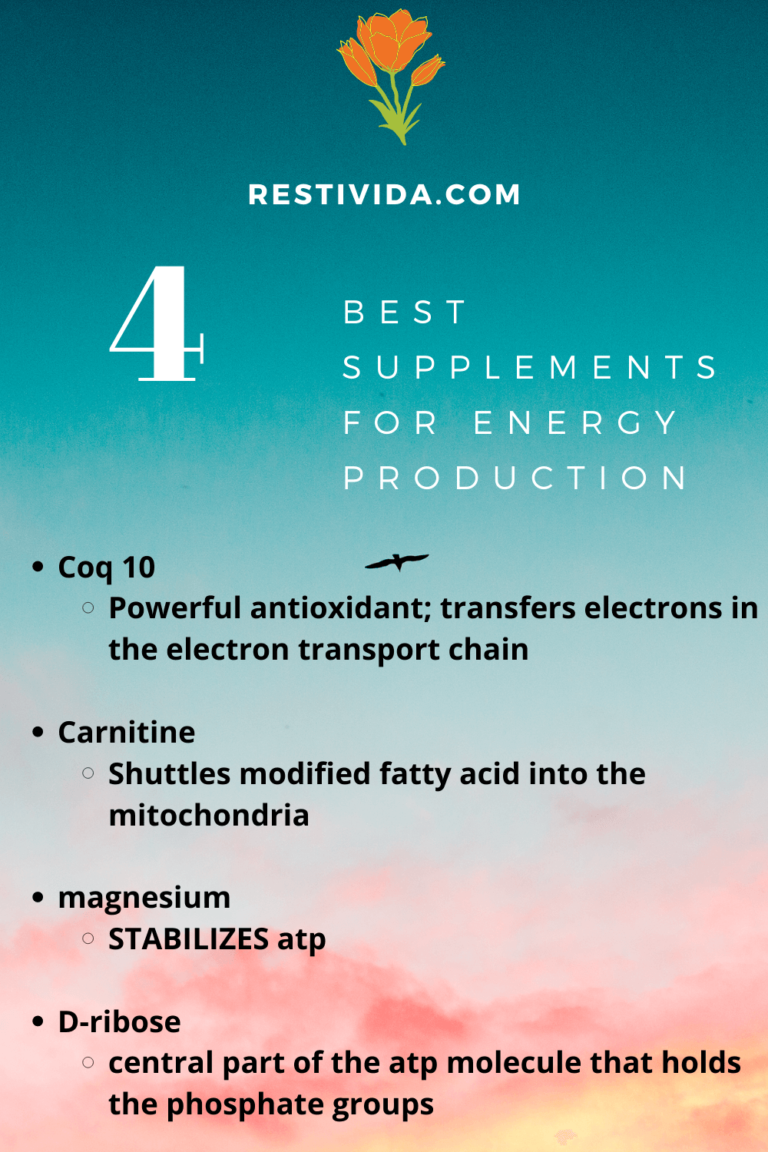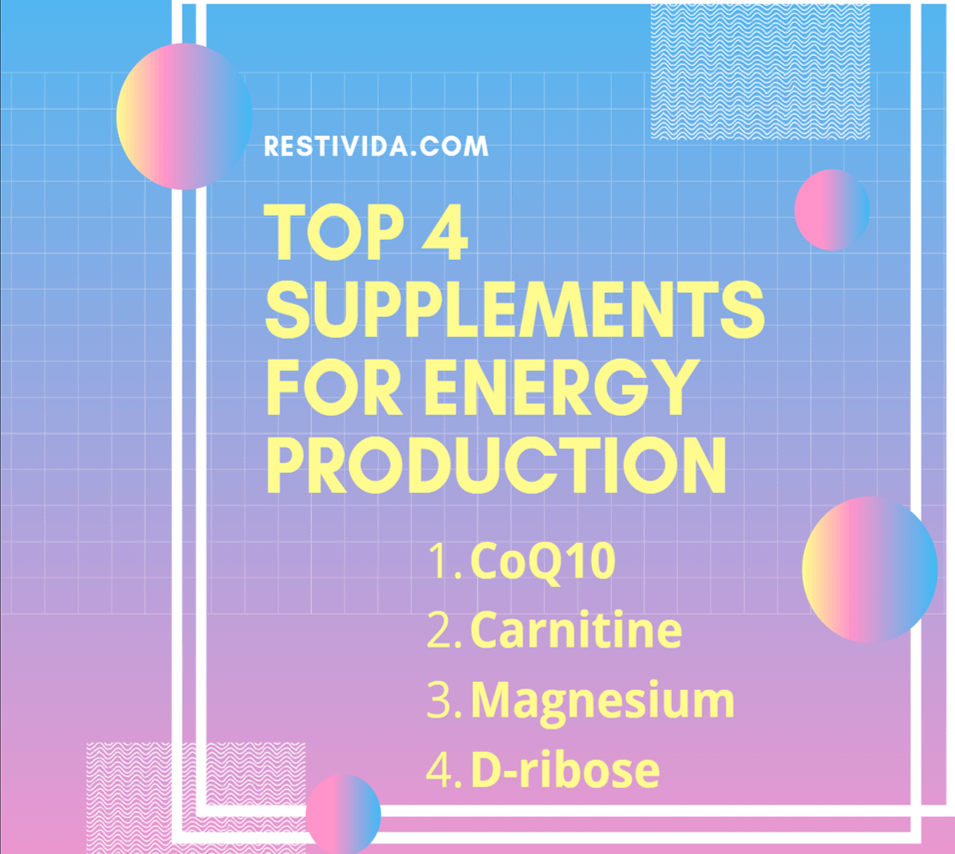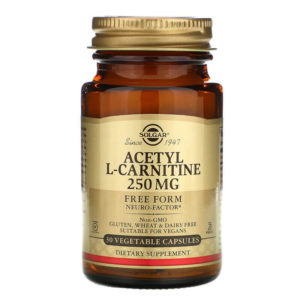This article may contain affiliate links. Please see our affiliate disclosure.
4 Best supplements for energy if you're suffering from an Invisible illness
You have decided that you wanted to add some supplements to your treatment regimen for your invisible illness. Maybe you only want to treat yourself with supplements. Whether it is Fibromyalgia, Chronic Fatigue CFS/ME, Sciatica, Rheumatoid Arthritis, Plantar fasciitis, Lupus or Irritable Bowel Syndrome; taking supplements gives you an added boost to your recovery or it helps to cushion some of the symptoms that you still have lingering. Take a look at the electron transport chain blog to see where these all fit in.
If you haven’t gotten a diagnosis yet and think you may be suffering from an invisible illness please take a look at our post. If you already got a diagnosis here are some helpful tips.
*As with any treatment change, talk to your healthcare provider.

Here are the Top 4 supplements to take as a part of your invisible illness treatment
1. CoQ 10 (Ubiquinol)
What it is: CoQ10 is known to be a powerful fat soluble antioxidant and it’s known by a few different names Coenzyme Q, CoQ, CoQ10, Ubiquinone, Ubiquinone-Q10, Ubidecarenone, or Vitamin Q10. It is called a Coenzyme because it’s a non-protein entity that binds to another enzyme in order for it to perform its function. The number ‘10’ comes from the number of isoprene repeats, these are the molecules that give it the antioxidant properties that it has.
How it works: CoQ10 prevents damage to DNA and cells by neutralizing free radicals that are formed when bad fats steal electrons from the cell walls which make them weak and damaged. So essentially, CoQ10 provides these electrons to those fat soluble free radicals so that they keep the cell membranes, that are made mostly of fat, in mint condition. Great cell walls make protected DNA and protecting the DNA is crucial in preventing diseases such as cancer and premature aging. CoQ10 is made in the body but it can also be taken in supplement form or certain foods from both vegan and non vegan sources.
Available forms: The two most common forms of this supplement are CoQ10 or Ubiquinol, the active form, This means it’s ready to give away electrons right away. You can decide to pick your favorite whether it be capsules, softgels, powder, melts or chewables.
Dosage recommendation: Clinical studies suggest that doses as high as 1200 mg is used and some companies make doses as low as 25 mg. Most supplements are made in 100 mg and 200 mg doses. It’s taken once per day but taking split doses is also practical to keep the concentration in the blood constant.
Top four (4) benefits: Improved energy, better sleep, reduced brain fog, improved skin condition
Top four (4) side effects: rash, nausea/abdominal pain, headache, lowering of blood pressure
Top four (4) food sources: offal, fatty fish, legumes, fruit and vegetables
2. Acetyl-l-carnitine (L-carnitine)
What it is: L-Carnitine is an amino acid that is important for turning fat into energy. Since it is an amino acid it’s actually the building block of protein. That means aside from the actual molecules, this is the smallest form of a protein. Similar to the building materials in a house sand makes bricks but bricks make up a house. Molecules are like the sand and amino acids are like bricks. This amino-acid gets the name from being first found in meat from the latin word “carnus” meaning meat. “L” means left in reference to it’s form. (The opposite is the “R” or right form.) only the “L” form can be used by the body to make proteins.
How it works: Carnitine works by helping to transport the fatty acid chain into the mitochondria which is the organelle inside most of the cells including the heart, liver muscle and brain. All these organs are full of energy making cells! and fat is the most concentrated form of energy. What’s better to make energy out of?
Available forms: Carnitine is found naturally in the body. It’s made in the liver, kidney and brain using lysine and methionine; essential amino acids. The active form is acetyl-L-carnitine; the modified fatty acid is already attached and the acetyl-L-carnitine can be shuttled into the mitochondria directly. Supplements are also available in both forms, but users report different uses and benefits from both.
Dosage recommendation: Supplements are available as low as 250 mg to 2000 mg per serving for both carnitine and acetyl-L-carnitine. Some users take quite a bit more but they are only doing this under medical supervision.
Top four (4) benefits: It is believed that acetyl-L-carnitine crosses the blood-brain barrier and contributes to the relief of many cognitive symptoms such as brain fog, depression, slow reaction time and fatigue. Carnitine on the other hand is mostly used by bodybuilders to boost performance and build muscle aid in recovery and reduce muscle soreness.
Top four (4) side effects: headache; stomach upset, diarrhoea, sleeplessness if taken too close to bedtime.
Top four (4) food sources: meats (especially red meat), dairy, beans, avocados
3. Magnesium
What it is: Magnesium is one of the most favorite of all the supplements for treating pain, sleeplessness and cognitive disorders. Magnesium is a metal but can only be used in the body in its ionic form so it must be attached to a safe and biologically beneficial part.
How it works: Magnesium is beneficial for over 300 enzymatic reactions in the body. But for this write up the emphasis will surround energy production and sleep. It stabilizes ATP which is important in energy production and it also regulates the neurotransmitters and works with the sleep hormone melatonin. This is important to our biological clock; letting us know when to sleep and when to wake-up.
Available forms: There are several types of magnesium available as supplements depending on the need the specific type can be picked up. Magnesium malate/Magnesium citrate has been found to be important for energy production while Magnesium glycinate/Magnesium citrate has been the most popular for sleep and relaxation. There are also alternative forms such as Magnesium chloride also called magnesium oil/brine and good ole epsom salts. These two have been long used as foot and body soaks to provide relief to tired feet and achy muscles.
Dosage Recommendation: Men, women and children have different requirements. A sweet spot would be around 300 mg for men and 400 mg for men. Consult a pediatrician for a child’s dosage as it varies by weight. Please note that above 400 mg per day may have serious consequences.
Top four (4) benefits: muscle relaxation, restful sleep, reduced cognitive problems, pain relief
Top four (4) side effects: Within supplement doses are loose bowels, bloating, abdominal pain and nausea.
Top four (4) food sources: Dark chocolate, legumes, seeds, whole grains (and of course avocados!)
4. D-ribose
What it is: Ribose is a type of sugar that is the important part of DNA, RNA and ATP. This is the energy currency of the entire body and it means Adenosine Triphosphate.
How it works: D-ribose works by forming a component with the amino acid adenine to form adenosine. This is the foundation for the three phosphate molecules. The D-ribose is the anchor in the middle of the adenine and the three phosphate groups.
Available forms: The “D” in D-ribose refers to the atoms arranged on the carbon in its three dimentional shapes. This is the natural form of ribose as opposed to L-ribose which is an unnatural manufactured form. D-ribose is the only form available in supplement form, don’t worry. The unnatural form is not on the market for human consumption
Dosage recommendation: The recommended dosage is 5 grams per day. Other recommendations are as high as 15 grams in the first few weeks to build up the concentration in the body. After a few weeks the dosage is usually gradually reduced to 10 grams then to 5 daily doses.
Top four (4) benefits: Increased energy, reduced post exertional malaise, reduced overall body pain, improved heart function
Top four (4) side effects: Reduced blood sugar, dizziness, diarrhea, headache
Top four (4) food sources: Mushrooms, preserved fish and fish eggs, dairy, red meat
Now that you know the basics of these and how they work in the body to produce energy, reduce pain and promote sleep you may decide to give them a try.
Once again, please consult your physician for the length of time you can be on these supplements.
FAQ
- Do I take these all at once or do I space them out?
- It’s ideal to take them all at once. These work great in a smoothie or you can swallow them all at breakfast or after lunch. Since these are energy producing supplements it’s better not to take them (except for magnesium) too close to bedtime. Unless, you’re trying to pull an all-nighter. (not recommended)
- How long can I be on supplements?
- There are many scientific research papers that suggest these supplements can be taken up to 90 days. There are no other scientific studies that say these have been taken indefinitely. Some users report that they have taken them for years and have had no side effects or long term effects. Check in with your Dr every 6 to 12 months to make sure that everything is going well.
- One of these things is giving me a headache/making me dizzy/nauseous and I’m not sure which one?
- Take one first and wait for 3 weeks then add another. See how that goes and add another. Some persons say that it’s better to take all at once since they work together but with these four taking one at a time makes sense. First try CoQ10, Magnesium, Carnitine then finally D-ribose. Read all the side effects and warnings on the websites and check other reviews for other users’ experience. You can also reduce the dosages
- Magnesium is supposed to help with energy production but why is it making me sleepy?
- Along with energy production, magnesium also relaxes you. This could be the reason why. Magnesium glycinate is specifically touted for relaxation. Try a different form such as magnesium malate. In addition, try taking it the more active part of your day. Please don’t take it before driving just to make sure you know how it affects you.
- Do I really need to take all of these? Can’t I just do one?
- You may need just one or you may need two, three or all four. Try one and if you achieve the results you are looking for then stick to it. They are all functional in their own right.




